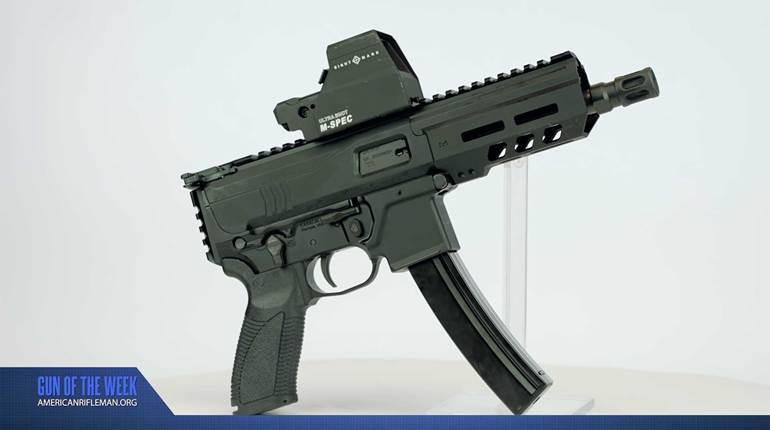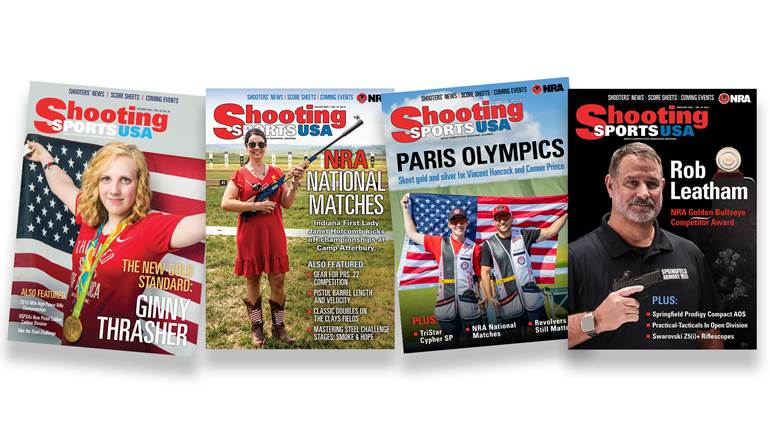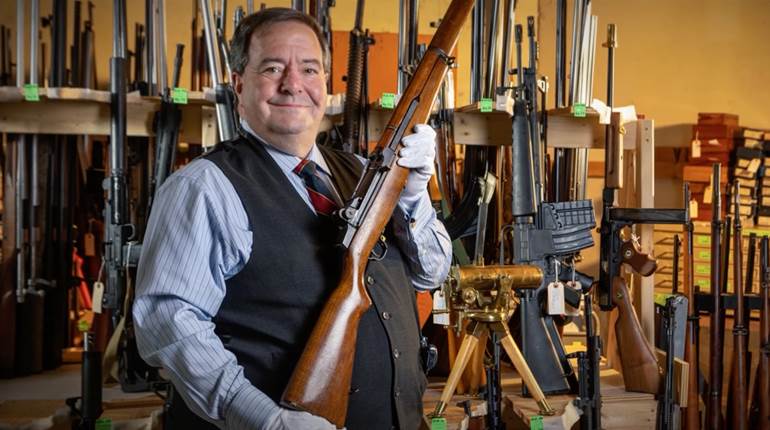The No. 4 rifle, commonly known as the No. 4 Lee-Enfield, was the standard British service rifle of World War II. Even though the design was officially adopted in 1940, the British were able to produce it in significant quantities by war's end. By 1944, the number of available No. 4s was sufficient enough that small quantities of them were able to be dropped to arm resistance groups fighting German forces in France. Watch our "American Rifleman Television" I Have This Old Gun segment above to see the details of these unique rifles.
"Britain makes millions of No. 4 rifles throughout the war. They're made overseas as well, they're made in Canada at Long Branch and they're made in the United States at Savage Arms," American Rifleman Executive Editor Evan Brune said. "And eventually, Britain has enough of these guns in military service that they can afford to start using some of them to arm resistance groups."

Together, the British Special Operations Executive and the American Office of Strategic Services, the forerunner of today's CIA, implemented a supply-drop plan codenamed "Operation Carpetbagger." Supplies of all sorts were airdropped from American planes to resistance units across France, giving them the arms, ammunition and supplies needed to carry on an insurgency against their Nazi occupiers. Among these supplies were No. 4 rifles taken directly from British production lines.
"Since I've been old enough to actually buy my own rifles, I've been collecting Lee-Enfields. And this group of No. 4s imported by Navy Arms from France is like no other that I've ever seen," NRA Media Editorial Director Mark Keefe said. "None of these guns have been messed with since 1945."
Following war's end, many of these arms remained scattered across France. While details are scarce, some sort of organized effort was made to gather these arms up and place them within police control, allowing them to be gathered as a complete group and accordingly marked. Each rifle from this cache bears a French inventory number on the left side of its receiver, each with a "PP" serial number prefix.

"After the war was over, you have all of these military rifles scattered in barns and basements and houses across France. And the French government pleaded with its people. It said, you know, 'Turn in your arms. You don't need them anymore. The German invaders are gone.' And many French citizens did exactly that," Brune said. "They brought them to their local police stations. And in order to track all of these guns coming in and to ensure that they were being controlled, they were marked by these police stations. And so the PP marking stands for Prefecture de Police."
All the rifles were stored and, later, transferred to the control of the French military, which retained the rifles, along with other arms, in its ordnance stores. There they remained for nearly 80 years until discovered.

"Enter Val Forget, III, the owner of Navy Arms, went to France and discovered a cache of these things. The guns were in very, very good condition," American Rifleman Field Editor Garry James said. "Most still had their slings. Unfortunately, the magazines had been removed and stored someplace else, and all the bolts had been removed. But there was a good quantity of these to be had."
To watch complete segments of past episodes of American Rifleman TV, go to americanrifleman.org/artv. For all-new episodes of ARTV, tune in Wednesday nights to Outdoor Channel 8:30 p.m. and 11:30 p.m. EST.
























